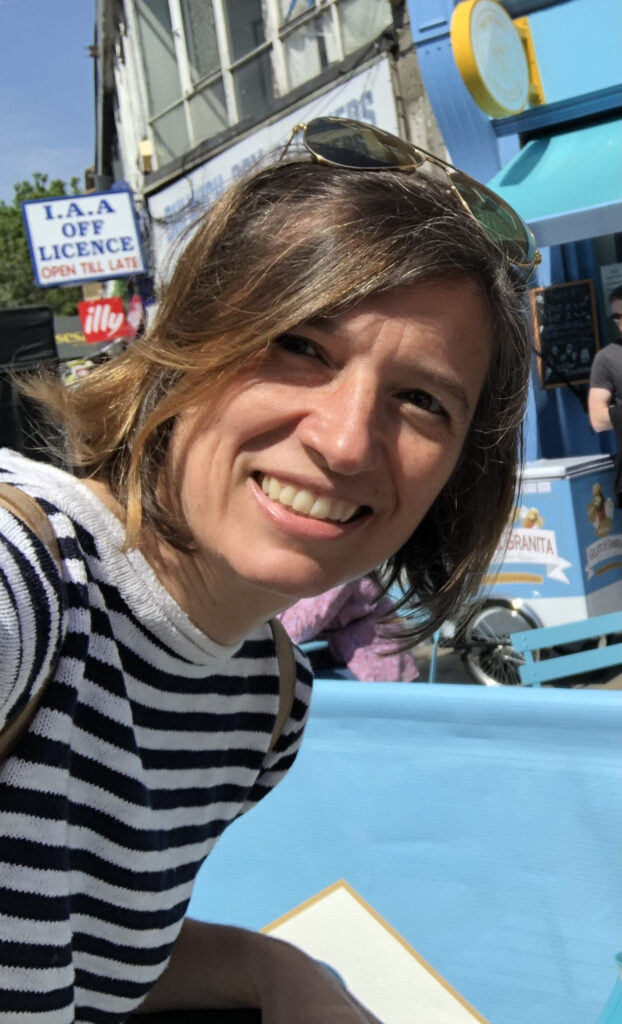[中文版]

Personal Profile
Prof Stuart Dunn is a Professor of Spatial Humanities as well as the Head of Humanities in the Faculty of Arts & Humanities at King’s College London. His research interests includes history of cartography, digital approaches to landscape studies, and spatial humanities.
1. How do you define Digital Humanities?
I see DH as any study of the human record which makes critical use of digital methods, and/or computational ways of thinking. Of course much of the human record itself is now digital, to a much greater extent than it was when I started out in the field. This has broadened DH’s focus from a discipline which simply uses the digital to understand the humanities better, to include study ofthe digital itself from a humanities perspective. For me, this makes the roots of the field in the way that humanists think about the digital world more important and interesting than ever.
2. How did you become interested in DH?
I came to DH relatively late in life, towards the end of my PhD. I was researching a very traditional, non-digital field, which involved reconciling different mechanisms for dating prehistoric events (if only I had known then what I knew now about the possibilities of, for example, network analysis). I discovered that a key need for my research was understanding relationships between different pieces of evidence from different locations – e.g. the relationship between deposits of the same type of pottery from Egypt and Cyprus, and how they relate to ancient layers of volcanic ash in the Aegean islands. This started me thinking about how such data could be systematically structured, compared and mapped. So having constructed a rudimentary database of all this data, I basically taught myself GIS so that I could analyse different concentrations of different types of evidence across different regions and at different times.
3. Tell us about one of your DH projects?
Over time, my interest in GIS and maps became my primary focus. A project which exemplifies this is the Heritage Gazetteer of Cyprus, which was funded by the A G Leventis Foundation. The HGC aims to provide a framework for thinking about place in Cypriot heritage, and a data resource to trace the evolution of placenames over time. Any toponyms occurring in literature before 1918 can be entered and associated with one or more existing locations, which enables us to build networks of references across the island. This allows us to ask, for example, what the differences are between the town of “Pano Calepia” described by Florio Bustron in 1549, and “Kallepia” described by George Jeffrey in 1918. How has its spatial footprint and relationships with other sites changed, and how do we document these changes?
4. And a DH project you particularly like?
There are so many! One I particularly admire is the Digital Periegesis project , which is using digital mapping methods to re-examine the work of Pausanias of Magnesia, and in the process asking exciting new questions about the relationships between text, time and place.
介绍 Stuart Dunn教授

个人简介
Stuart Dunn 教授是伦敦国王学院艺术与人文学院的人文学院院长兼空间人文学教授。他的研究兴趣包括制图历史、景观研究的数字方法以及空间人文学。
1. 您如何定义数字人文?
数字人文是指对人类记录的研究中批判性地使用数字方法和/或计算思维。当然,如今的人类记录本身也比我刚进入该领域时要更加数字化了。这使得数字人文的焦点从一个仅仅使用数字手段来更好地理解人文学科的学科,拓展到从人文学科的角度来研究数字化本身。对我来说,这使得人文学者如何思考数字世界的根源变得比以往任何时候都更加重要和有趣。
2. 您是如何对数字人文产生兴趣的?
我在接近博士学位结束时才接触到数字人文。我当时正在研究一个非常传统的、非数字化领域,涉及协调不同的史前事件的年代测定机制(如果我当时知道现在关于例如网络分析的可能性就好了)。我发现我的研究的一个关键需求是理解来自不同地点的不同证据之间的关系——例如,埃及和塞浦路斯的相同类型陶器的沉积物之间的关系,以及它们与爱琴海岛屿上古代火山灰层的关系。这让我开始思考如何系统地构建、比较和映射这些数据。因此,我构建了一个初步的数据库,然后基本上自学了地理信息系统(GIS),以便我可以分析不同地区和不同时间的不同类型证据的不同浓度。
3. 请告诉我们一个您的数字人文项目?
随着时间的推移,我对GIS和地图的兴趣成为我的主要焦点。一个能够体现这一点的项目是由A G Leventis基金会资助的塞浦路斯遗产地名辞典。该项目旨在为思考塞浦路斯遗产中的地点提供一个框架,并作为一个数据资源来追踪地名随时间的演变。任何1918年之前的文献中出现的地名都可以输入并与一个或多个现有位置相关联,这使我们能够在岛上建立参考网络。例如,这使我们能够问,1549年Florio Bustron描述的「Pano Calepia」与1918年George Jeffrey描述的「Kallepia」有什么区别?它的空间范围和与其他地点的关系如何变化,以及我们如何记录这些变化?
4. 您特别喜欢的一个数字人文项目?
有很多项目我都非常喜欢!我特别欣赏的是数字游记项目,该项目使用数字地图方法重新审视马格尼西亚的帕萨尼亚斯的作品,并在此过程中提出了关于文本、时间和地点之间关系



